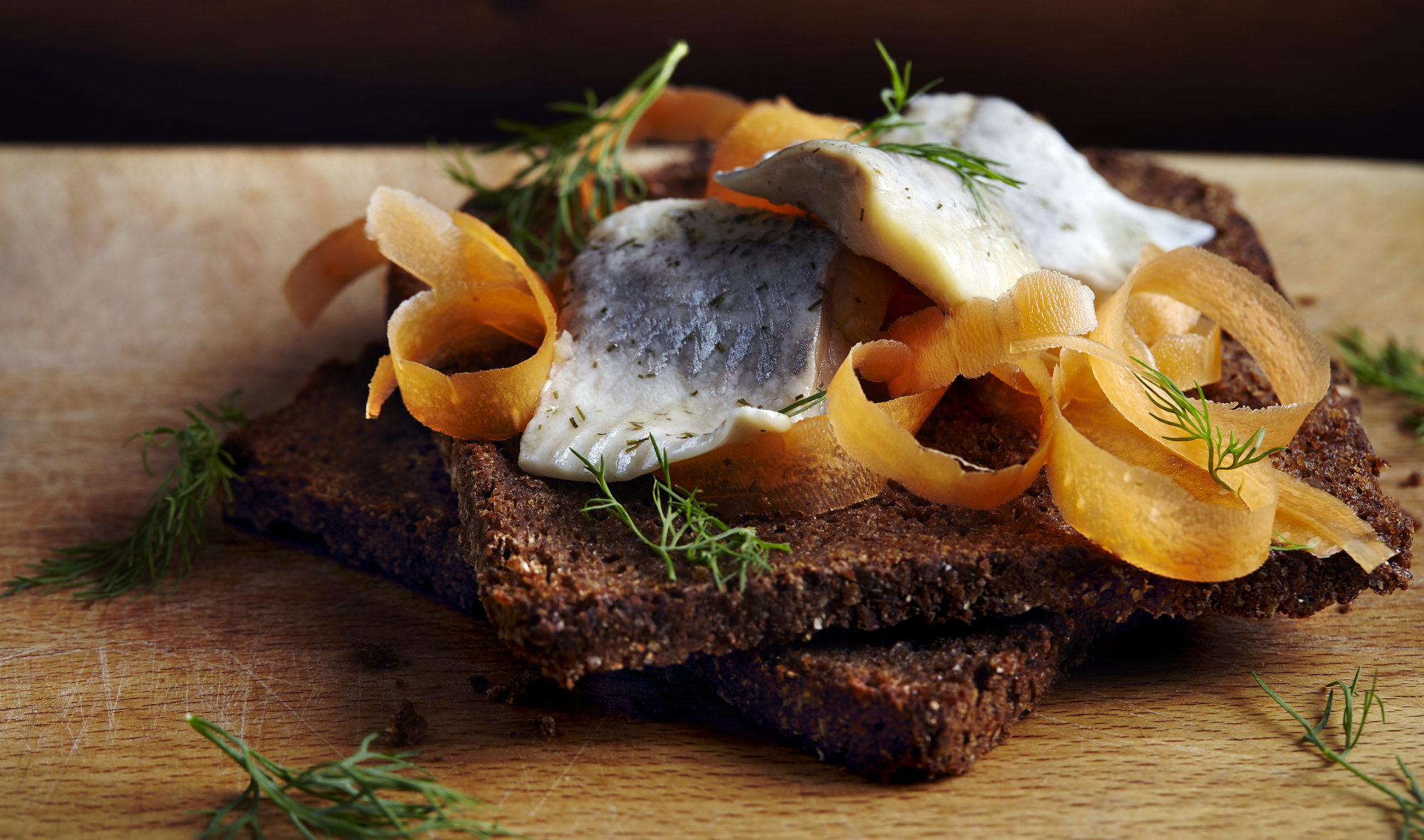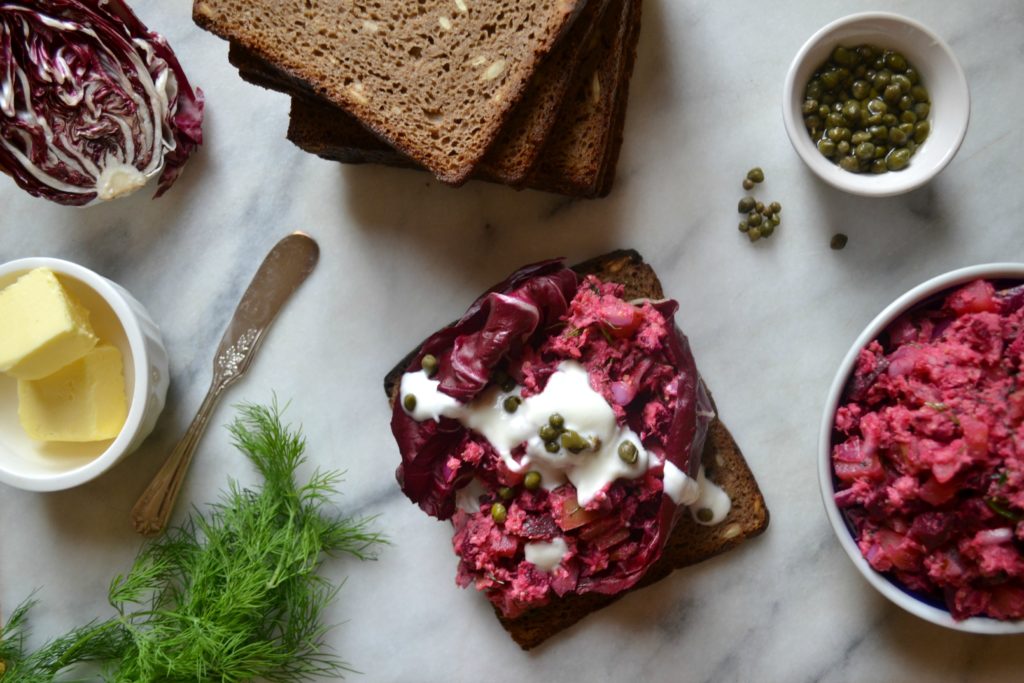
Join PN Level 2 for about $6/day! Plus, FREE Bonus worth $697! (This week only.)

Herring is an oily fish found mostly in coastal waters. Herring are commonly preserved (pickled, salted or smoked) but fresh herring is a healthy and tasty option, too. Fresh herring boasts plenty of protein (nearly 20g of protein in three ounces of cooked Atlantic herring) and a generous dose of Omega-3 fatty acids. If possible, buy fish from a local fishmonger. Choose large, firm, and slippery fish that are bright in color and do not smell “fishy”. Keep the fish refrigerated and eat it as soon as possible (within a day or two at the latest.) Fresh herring can be simply prepared by pan frying, baking, or grilling the whole fish.
Herring is an oily fish found mostly in coastal waters. There are various species of herring; the most abundant species are the Atlantic herring, Pacific herring, and Araucanian herring.
Herring are commonly preserved: you may find them pickled, salted or smoked. And that can of sardines on the shelf might actually be small herring in disguise.
In addition to preserved options, fresh herring is worth seeking out: it’s easily cooked for a healthy and tasty meal. Plus, it tends to be more affordable than other fish choices.
Herring is silvery-grey in color and possesses a single dorsal fin that has no spine. Herring are characterized by a protruding jaw that looks somewhat like the jaw of a bulldog.
Size of herring can vary, but they’re generally a small fish. Atlantic herring can grow up to 18 inches in length while Pacific herring grow to about 15 inches.
It’s easy to confuse herring for another small, oily fish so ask your fishmonger to be sure, or check the label if the fish has been packaged and / or frozen.
Three ounces of cooked Atlantic herring has around 173 calories, 19.6g of protein, no carbohydrates, no fiber, and 9.9g of fat.
Herring is high in vitamin A, vitamin D, vitamin B12, and folate. It is also a good source of minerals such as calcium, phosphorous, potassium, and magnesium.
Looking for a source of Omega-3 fatty acids? Herring has them in abundance.
If you didn’t catch your own herring, you can purchase fresh herring from your local fishmonger.
Herring is usually sold whole. Ensure freshness by choosing large, firm and slippery fish that are bright in color. The skin should be silvery and (if whole) the eyes should be clear and bright.
Smell the fish: it should not smell “fishy” or ammonia-like.
Like other oily fish, fresh herring won’t last long. Once you’ve purchased herring, it’s best to prepare and cook it as soon as possible.
If you don’t want to prepare it right away, you can store it in the fridge for up to two days or in the freezer for up to three months. If freezing, wrap the fish tightly in plastic wrap and keep it in a covered airtight container or heavy-duty freezer bag.
Whole fish must be cleaned before cooking. The easiest way to do this: ask your fishmonger to scale, trim, and bone the fish for you.
To cook the herring, you have some options. Here are three possibilities:
Option 1. Sautéed: Season the fish with a sprinkle of salt and pepper. Heat 1 tbsp of olive or coconut oil on a skillet over high heat. Once the oil is hot, add a smashed garlic clove to the pan to flavor the oil slightly. Add the herring and sauté the fillets for three minutes per side or until they are opaque and cooked through. Once cooked, add fresh ground pepper to taste and garnish with lemon wedges.
Option 2. Baked: Preheat your oven to 375 degrees Fahrenheit. Baste the herring in 1-2 tbsp of olive or coconut oil, sprinkle it with salt and pepper, and place it in a baking dish. Bake the herring for three minutes or until herring is opaque all the way through. Remove the herring from the oven and add fresh ground pepper to taste. Garnish with parsley and lemon wedges.
Option 3. Grilled: Heat a gas grill to medium-high. Baste the herring in 1-2 tbsp of olive or coconut oil. Place it on the hot grill, flipping once so that each side is grilling for about 3 minutes. The fish is done when it is opaque and cooked through.

Sildesalat is a Danish word that means “herring salad”. Sildesalat is similar to a potato salad, except that it adds the bold, umami flavor of smoked fish, and the jewel-toned color of beets. It is delicious served as a side salad, or topped on an open-faced sandwich.
Prep Time: 10 minutes Cook Time: 0 minutes Yield: 2-4 servings
If your smoked herring came with a skin, remove it. Add the meat to a bowl and add mustard, oil, and yogurt. Mash together as if you were making a tuna salad, until all the ingredients are well combined.
Then, add the cubed beets, potatoes, and red onion, and fold them in with the herring mixture. Add the fresh dill, salt, and pepper and mix again until all ingredients are well incorporated. Serve chilled.
Traditionally, sildesalat is served as part of a smørrebrød (smørrebrød = Danish word for “open-faced sandwich”) platter. It can also be eaten plain as a side salad. To make a delicious Scandinavian-style sandwich: On a slice of dense rye sourdough, layer a spread of butter, a leaf or two of radicchio lettuce, and a dollop of sildesalat. Finish with a drizzle of yogurt and a sprinkling of capers.
Precision Nutrition’s Encyclopedia of Food expands every single month as we highlight new foods and showcase beautiful food photography. If you’d like to stay up to date, simply click this link. From there, we’ll send you a FREE copy of our recipe book. We’ll also let you know when new and delicious foods are added to the site.
Herring is an oily fish found mostly in coastal waters. Herring are commonly preserved (pickled, salted or smoked) but fresh herring is a healthy and tasty option, too. Fresh herring boasts plenty of protein (nearly 20g of protein in three ounces of cooked Atlantic herring) and a generous dose of Omega-3 fatty acids. If possible, buy fish from a local fishmonger. Choose large, firm, and slippery fish that are bright in color and do not smell “fishy”. Keep the fish refrigerated and eat it as soon as possible (within a day or two at the latest.) Fresh herring can be simply prepared by pan frying, baking, or grilling the whole fish.